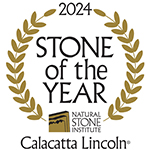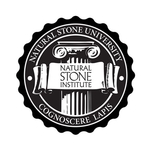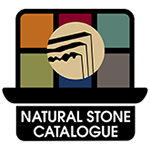ASTM International Standards
| ASTM is recognized globally for testing and publishing Material Standards, which includes Natural Stone Products. View our list of current requirements.. |
The American Society for Testing and Materials International (ASTM), founded in 1898, is a not-for-profit organization that provides a global forum for the development and publication of voluntary consensus standards for materials, products, systems, and services. Over 30,000 individuals from 100 nations are the members of ASTM International, who are producers, users, consumers, and general interest parties such as government representatives and academicians.
Committees are established which focus on and have jurisdiction over standards for different designations, such as Dimensional Stone (Committee C18) or Cement (Committee C01). These committees are made up of several subcommittees which are tasked to develop and discuss individual segments within the committee's jurisdiction. For example, one subcommittee may deal with the development of standards dealing with Test Methods of Dimensional Stone, and another with Anchorage Components and Systems for Natural Stone. These committees meet on a regular basis to discuss and present information for each new or existing standard.
The entire membership of ASTM International votes on whether a standard is suitably developed and researched before it is forwarded for final approval. Negative votes cast during the balloting process are fully considered before forwarding.
Companies, agencies, and individuals use ASTM standards. Buyers and sellers of materials, products, and services include these standards in contracts; engineers, scientists, architects, and designers use them in their work; government agencies reference them in codes and regulations; and many others refer to them for performance information.
ASTM International is recognized globally and continues to review and develop new standards needed in a wide range of materials.
Why ASTM standards and other like standards are important.
In today's building environment, the emphasis is on safe, permanent, low maintenance products, of which stone leads the list in the minds of architects, designers, and consumers worldwide.
Without a consistent, realistic set of standards and testing procedures for stone products, the stone industry as a whole would be in disarray. The standards that have been developed and set in place for these products are important tools to help protect end users, individual companies, and the industry from negative effects related to product failures. Materials standards help to prevent the use of stone products for unsuitable applications. For instance, without the minimum standards for Abrasion Resistance of Stone Subjected to Foot Traffic (ASTM C241-90(1997)), it would be more likely that very soft, easily damaged materials would be installed in commercial applications. This may cause the owner to incur additional cost for repair and maintenance, and negatively affect the reputation of the stone industry as a whole.
These standards also serve as benchmarks for quality limits of products. If a stone with a below-minimum flexural strength is used for a lintel, then it may be more likely to fail, thus causing damage and possible injury. Interior or exterior flooring or paving with an inadequate slip resistance level will more likely cause slipping accidents in public or private projects.
How and when these standards apply.
As stone industry professionals, it is our task to apply the correct standards to materials at appropriate times in order to keep the stone industry strong and to remain a reliable source of quality products.
Most architectural specifications require that stone meet certain specified ASTM or other testing standards before it will be accepted for use. Some products on the market today have not been tested for quality standards that are required for certain projects. The required testing should be reviewed and, if test results are not available for the stone product, then testing should be performed by the quarry or representative company as required. Some quarries and their representatives do not embrace this idea, because their products can be marketed to homeowners and residential projects without the need to perform testing. It is up to our industry to know how to identify these products and make sure to request the required material data needed.
Testing of stone can be performed by other companies in the event that required test data is not available. Independent labs can perform the appropriate tests and provide the information in a well organized, professional report.
It is important to know when a certain test is not required for a product. For example, a test for Slip Resistance would not be necessary for stone used in a vertical application, which will never receive foot traffic. Some examples are not as easily established. For instance, what are the needs for testing a stone to be used for interior flooring in a commercial application where the stone is installed over a raised floor deck subject to deflection, and will be subject to traffic from pedestrians and cleaning carts weighing 1,000 pounds? It may be required that the stone of choice meets standards related to Slip Resistance, Abrasion Resistance, Absorption, Compressive Strength, and Bending Strength. These are all physical requirements of the stone product during everyday use.
Be aware of the requirements of performance that will be placed on the stone at the time of installation, and in the future. If a stone has proven not to perform for a particular use, then avoid marketing it for that use. If testing is not available, require that it be done or avoid the product's use.
ASTM SPECIFICATIONS AND STANDARDS
The following ASTM standards are referenced in the Natural Stone Institute's Dimension Stone Design Manual, VI. To obtain copies of these standards, consult the ASTM website: www.astm.org.
MATERIAL SPECIFICATIONS
ASTM C503
Standard Specification for Marble Dimension Stone (Exterior)
ASTM C568
Standard Specification for Limestone Dimension Stone
ASTM C615
Standard Specification for Granite Dimension Stone
ASTM C616
Standard Specification for Quartz-Based Dimension Stone
ASTM C629
Standard Specification for Slate Dimension Stone
ASTM C1526
Standard Specification for Serpentine Dimension Stone
ASTM C1527
Standard Specification for Travertine Dimension Stone
TEST STANDARDS
ASTM C97
Standard Test Method for Absorption and Bulk Specific Gravity of Dimension Stone
ASTM C99
Standard Test Method for Modulus of Rupture of Dimension Stone
ASTM C120
Standard Test Method of Flexure Testing of Slate (Modulus of Rupture, Modulus of Elasticity)
ASTM C121
Standard Test Method for Water Absorption of Slate
ASTM C170
Standard Test Method for Compressive Strength of Dimension Stone
ASTM C199
Standard Test Method for Pier Test for Refractory Mortars
ASTM C217
Standard Test Method for Weather Resistance of Slate
ASTM C241
Standard Test Method for Abrasion Resistance of Stone Subjected to Foot Traffic
ASTM C880
Standard Test Method for Flexural Strength of Dimension Stone
ASTM C1028
Standard Test Method for Determining the Static Coefficient of Friction of Ceramic Tile and Other Like Surfaces by the Horizontal Dynamometer Pull-Meter Method
ASTM C1201
Standard Test Method for Structural Performance of Exterior Dimension Stone Cladding Systems by Uniform Static Air Pressure Difference
ASTM C1352
Standard Test Method for Flexural Modulus of Elasticity of Dimension Stone
ASTM C1353
Standard Test Method Using the Taber Abraser for Abrasion Resistance of Dimension Stone Subjected to Foot Traffic
ASTM C1354
Standard Test Method for Strength of Individual Stone Anchorages in Dimension Stone
OTHER APPLICATION STANDARDS
ASTM Manual Series: MNL 21
Modern Stone Cladding: Design and Installation of Exterior Dimension Stone Systems. 1995.
ASTM A666
Standard Specification for Annealed or Cold-Worked Austenitic Stainless Steel Sheet, Strip, Plate, and Flat Bar
ASTM B221
Standard Specification for Aluminum and Aluminum-Alloy Extruded Bars, Rods, Wire, Profiles, and Tubes
ASTM C36/C36M
Standard Specification for Gypsum Wallboard
ASTM C59/C59M
Standard Specification Gypsum Casting Plaster and Gypsum Molding Plaster
ASTM C91
Standard Specification for Masonry Cement
ASTM C119
Standard Terminology Relating to Dimension Stone
ASTM C144
Standard Specification for Aggregate for Masonry Mortar
ASTM C150
Standard Specification for Portland Cement
ASTM C207
Standard Specification for Hydrated Lime for Masonry Purposes
ASTM C270
Standard Specification for Mortar for Unit Masonry
ASTM C295
Standard Guide for Petrographic Examination of Aggregates for Concrete
ASTM C630/C630M
Standard Specification for Water-Resistant Gypsum Backer Board
ASTM C920
Standard Specification for Elastomeric Joint Sealants
ASTM C1242
Standard Guide for Selection, Design, and Installation of Exterior Dimension Stone Anchors and Anchoring Systems
ASTM C1515
Standard Guide for Cleaning of Exterior Dimension Stone, Vertical and Horizontal Surfaces, New or Existing
ASTM C1528
Standard Guide for Selection of Dimension Stone for Exterior Use
ASTM E72
Standard Test Methods of Conducting Strength Test of Panels for Building Construction
ASTM E119
Standard Test Methods for Fire Test for Building Construction
ASTM E575
Standard Practice for Reporting Data from Structural Tests of Building Constructions, Elements, Connections, and Assemblies
ASTM E632
Standard Practice for Developing Accelerated Tests to Air Prediction of the Service Life of Building Components and Materials
How to Contact ASTM
ASTM International
100 Barr Harbor Drive
West Conshohocken, PA 19428-2959 U.S.A.
Telephone: 610.832.9585
Fax: 610.832.9555
www.astm.org
European Office:
Telephone: 146.243.7933
Fax: 146.243.3678












